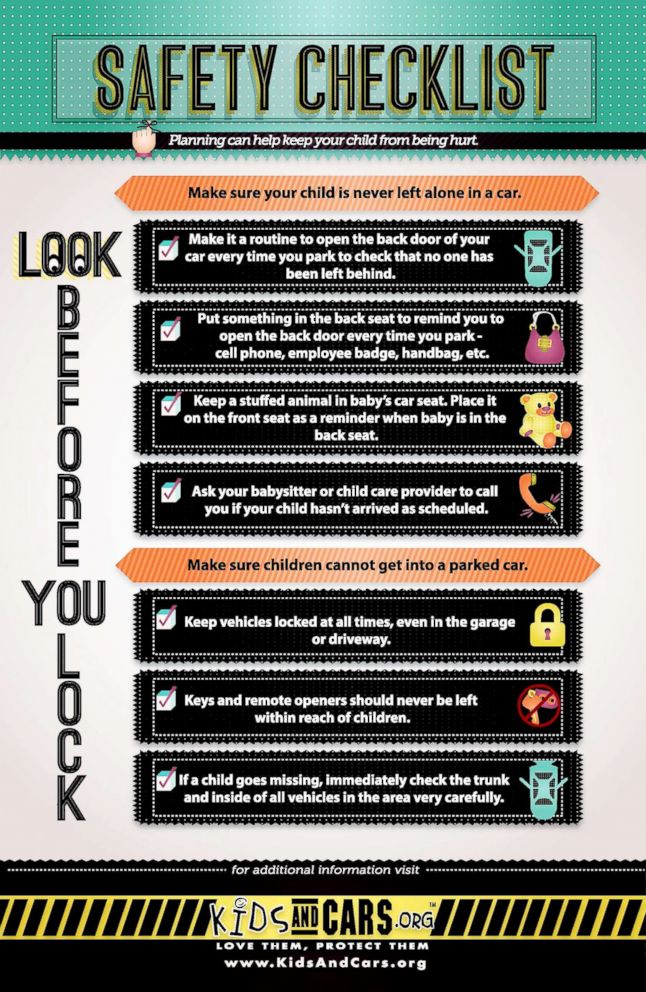Heartbroken Mom Warns Parents Against Hot Car Deaths After Losing Her Baby Girl

Seven years after her 1-year-old daughter died from vehicular heatstroke, Kristie Reeves still dedicates her life to preventing hot car fatalities. Reeves said of her daughter, Sophia Rayne “Ray Ray” Cavaliero:
“I miss everything about her. She was such a balanced child and I know that sounds weird for a 1-year-old, but her personality was so easy-going. She was so friendly and kind, such a good baby and fun. She made it easy to be a first-time mommy.”
On May 25, 2011, Ray Ray’s dad, Brett Cavaliero, drove to work with the baby in his back seat, not realizing until later that day that he never dropped her off at daycare.
When Ray Ray was found, it was too late.She was one of 33 children to die that year from a hot car fatality, according to the Department of Meteorology and Climate Science at San Jose State University. Brett was not charged based on the evidence of the investigation.
Explaining how she was able to forgive her husband, who did not face criminal charges over the accident, Reeves said:
”I immediately realized it was an accident, one that I could have just as easily made. In the years since, yes I feel a little resentment, not because of the accident, but because the collateral damage that the PTSD causes is very frustrating, heartbreaking, debilitating at times.
It wrecked our entire world, inclusive of our jobs, finances, relationships with family and loss of friendships.”
Reeves further shared that something as simple as a change in routine can confuse a normally-focused parents enough to make a fatal mistake like Cavaliero did. Reeves explained:
”Not once was I ever told about this danger to child passenger safety. If you had asked me the day before May 24 (2011 – when Sophie died), I would have assumed it was very bad parents and parents who used the car as a babysitter.
In these times when these children are forgotten, the most common factor was a change in routine. Mine was a wrong turn and we overslept.”
Heartbroken Reeves said that the nightmare of losing her daughter feels like it was yesterday. She said:
”Especially this time of year, every summer is particularly hard. Some days are not so horrific, but the angel day, birthday, Mother’s Day are always difficult. I tend to take that time off for extra counseling, therapy, and meditation to live through it because it’s like it just happened.”
READ ALSO: Home Safety Tips For Parents Of Little Children
Today, Reeves is part of the Texas Heat Stroke Task Force and works with Safe Kids Worldwide and Kids and Cars to speak out on behalf of hot car safety. She also helps parents cope after they’ve experienced tragedies or near misses.
Reeves wants other parents to understand that unless precaution is taken, that “this too can happen to you.” She says:
“Don’t think for one moment that only a monster would do this. I get why people dismiss it. It’s easier as parents than to accept the truth that your memory can fail you in times of stress, in times of chaos. That’s terrifying that your own mind can fail you with something so precious, your bundle of joy.”
In 2016, Reeves shared her full story with ABC News. Then, she had described how she dedicated her life to raising awareness of child vehicular heatstroke through her organization, Ray Ray’s Pledge.
“Every example that I have ever given is from an actual hot car death — not what could happen, but what did happen to good parents.”
To prevent tragedies, Reeves suggests parents use the acronym, ACT.
Avoid controllable distractions. This includes all mobile and hands-free devices.
Create reminders. Reeves creates free reminders with her smartphone by setting alarms and utilizing apps that send a confirmation that the child has been picked up or dropped off.
Take action. Dial 9-1-1 if you see an unattended child in a vehicle because timing is crucial.
“These kids can die in under an hour,” Reeves said. All parents should also take action by employing what she calls a “safety circle.”
READ ALSO: Mum Leaves Infant Locked In Car To Go Shopping
Reeves and Brett Cavaliero who now has 5-year-old twin girls ensure they’re safely dropped at school or home by the person transporting them and also the school. If they are not in school, teachers call Reeves to make sure the children are in a safe place.
Reeves is urging parents to utilize alarm systems on their smartphones as safety nets, reminding that child vehicular heatstroke can pose a danger for anyone.
While apps and car seat sensors can serve as reminders, Janette Fennell, president and founder of KidsAndCars.org, stresses that parents should have additional layers of protection when trying to prevent hot car-related tragedies. Fennell told GMA:
“When you talk about apps they are helpful, but we can’t think of them as foolproof because as we know, we get into dead cell areas. Until we have reliable technology, these are what we have to do to make sure children do not die in hot cars.”
Fennell and KidsAndCars.org revealed the following safety checklist to prevent hot car tragedies.
Make sure your child is never left alone in a car.
1. Look before you lock: open the back door every time you park your car to ensure no one was left behind.
2. Put your cell phone, wallet, work badge or handbag in the backseat to remind you to open the back door each time you park.
3. Keep a stuffed animal in your baby’s car seat, then, place it on the front seat as a reminder when baby is in the back seat.
4. Ask your babysitter or daycare center to call you if your child hasn’t arrived as scheduled.
Make sure your child cannot get into a parked car.
1. Keep vehicles locked at all times, even in the garage or driveway.
2. Keys and remote openers should never be left within reach of children.
Fennell said that it’s crucial to keep your child from getting into the car, rather than teaching them how to get out. “Be sure your neighbors can lock their vehicles as well.
3. If a child goes missing, immediately check the trunk and inside your neighbor’s vehicles carefully.
“What we always say is that if there’s a body of water nearby, check that first,” Fennell said. “Then check all the nearby vehicles in the area and check the trunk.”
Photo credit: Kristie Reeves






